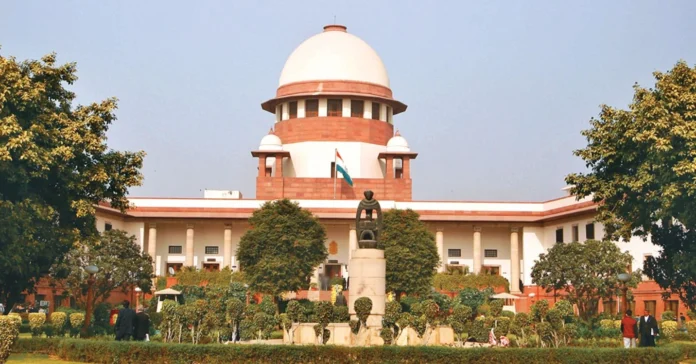In a move aimed at bringing in transparency, the Supreme Court has uploaded the complete process of appointing judges to High Courts and the Supreme Court on its website for the public’s awareness and knowledge.
The proposals approved by the Supreme Court Collegium for appointments as High Court judges during the period between November 9, 2022 to May 5, 2025, including the names, High Court, source – whether from service or bar, date of recommendation by the Supreme Court Collegium, date of notification by the Department of Justice, date of appointment, special category (SC/ST/OBC/Minority/Woman), and whether the candidate was related to any sitting or retired High Court/Supreme Court Judge, were also been uploaded on the Supreme Court website on May 5.
As per the data put up on the website, the Collegium considers merit and integrity as the prime criteria for the appointment of judges to different High Courts across the country.
Two-third posts are reserved for the Bar members and one-third for judicial officers.
As per the collegium, a candidate from the Bar should be in the age bracket of 45-55 years on the date of recommendation (relaxation may be made if the person is otherwise of outstanding merit), for recommendation to the post of a High Court judge.
An Advocate should be an income tax assessee for the preceding 10 years, if not exempted from paying income tax.
The average net professional income of a candidate should be more than or equivalent to Rs seven lakh per annum during the preceding five years.
The judge must have delivered an appropriate number of verdicts. The Collegium further takes into consideration the pro-bono work done by the Advocates, as well as their performance in the courts.
The judicial officers should be less than 58½ years on the date when the vacancy arises.
The Collegium also takes note of the inter se seniority of judicial officers, besides social diversity and representation of women & other marginalized sections of the society.
For judicial officers, the Collegium considers command over language, marshalling of facts and issues, reasoning for conclusion, appreciation of evidence, knowledge of procedural and substantive law, and application of law with reference to precedents.
For elevation as judges at the Apex Court, the Supreme Court Collegium considers the appointment by elevation of a Chief Justice or a judge of the High Court, an eminent member of the Bar, or a distinguished jurist.
In case of elevation of a Chief Justice or a High Court judge, the Collegium tries to give fair representation to all High Courts across the country.
Regarding inter se seniority among the High Court judges, the Collegium takes into consideration merit and integrity, besides the disposition rate of the judge in the High Court.
As per the website, the disposition rate should be considered in conjunction with other factors, such as the quality of judgments, the complexity of cases, and court workload.
The documents further show the specimen samples of the IB reports, collegium resolutions, bio-data, etc.
As per the details, between November 9, 2022 to May 5, 2025, out of 303 candidates, the Supreme Court Collegium approved 170 appointments for High Courts, including seven judges from the Scheduled Castes, five from the Scheduled Tribes, 21 from the OBC, 28 women, 23 minorities, 12 related to judges, and seven from the most backward classes.
During the tenure of Chief Justice of India Sanjiv Khanna (November 2024 to May 5), out of 103 candidates, the Supreme Court Collegium approved 51 appointments for High Courts. These include 11 judges belonging to the OBC category, one from the Scheduled Caste category, 2 from the Scheduled Tribes, eight from minorities, six women, and two related to the sitting or retired judge of the High Court or the Supreme Court.
Out of 170 recommendations made between November 2022 to November 2024, 17 are still pending before the Government. Out of 51 recommendations made from November 2024 to May 5, 12 names are still pending with the Government.


